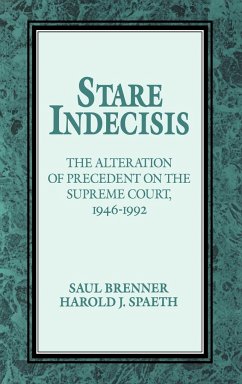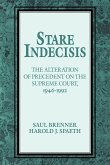Although the concept of precedent is basic to the operation of the legal system, there has not yet been a full-length empirical study of why U.S. Supreme Court justices have chosen to alter precedent. This book attempts to fill this gap by analyzing those decisions of the Vinson, Warren, and Burger Courts, as well as the first six terms of the Rehnquist Court - a span of 47 years (1946-1992) - that formally altered precedent. The authors summarize previous studies of precedent and the Court, assess the conference voting of justices, and compile a list of overruling and overruled cases. Additionally, the authors draw a distinction between personal and institutional stare decisis. By using the attitudinal model of Supreme Court decision making, which is normally seen as antithetical to the legal model of voting, the authors find that it is the individual justices' ideologies which explain their voting behavior.
Hinweis: Dieser Artikel kann nur an eine deutsche Lieferadresse ausgeliefert werden.
Hinweis: Dieser Artikel kann nur an eine deutsche Lieferadresse ausgeliefert werden.








